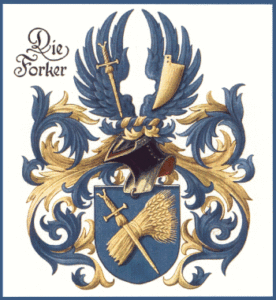Based on the findings of our research on the origin of our name (see: The name Forker – where do the Forkers come from) we have been interested in the results of modern Y-DNA research since 2009. We had heard that this would give insight into where the ancestors of people living today lived for many generations. Ultimately, we know today how people settled the earth, starting from Africa.
The question remained, can we use this to prove where the forkers came from. Does anyone offer genetic testing for private use at affordable prices. At the end of 2011, the company IGENEA, a Swiss company that brokered genetic tests in the USA and met our expectations, appeared.
To do this, we should first explain what Y-DNA tests provide and what they are based on. After molecular biologists had decoded the human genome, mankind could be divided into main groups (haplogroups), the part that was only inherited from father to son. This part, inherited from the fathers only to the sons, is called Y-DNA.
To distinguish these main groups, the alphabet was determined first, starting with the oldest (found in Africa). Today, the haplogroups are distinguished from A to Z. See: at wikipedia – haplogroup
We now have the results of 8 family members who have already undergone genetic testing. Result 6 times haplogroup I, once R-M and once I-M .
At first, this result only indicated where the earliest paternal line came from.
Paternal line
Haplogroup: I2a2b (prehistoric times)
Primitive people: Teutons, (antiquity)
Region of origin: Northwestern Europe (Middle Ages)
To illustrate the information given here, we will transfer the whole example to the classification of trees. We find that there are oaks, spruces, birches, lindens, etc. We assign the letters A-Z to these. The more people were tested, the more precisely it was found that subgroups can be formed within the haplogroups. In our example trees, corresponding to branches, but not enough – plenty of branches (subgroups) and finally leaves, equal to individual families!
After carrying out further tests of our own and those of others, we are now close to realizing which sheet we belong to. The finding is essentially based on the fact that everyone who was tested had to state where their earliest known ancestors came from. It should also be noted, however, that the long-established farm-owning families of Great Britain (England, Ireland and Scotland and the British Isles) have already been screened for membership of the various haplogroups. Thus we have been assigned to a branch, Group I, whose occurrence is mainly found on the British Isles.
Furthermore, Y-DNA tests can be used to show very well how closely or distantly namesakes are related. We would like to point out that these Y-DNA tests do not provide any information about hereditary physical diseases or abilities.
In addition, the mitochondrial DNA (only inherited from mothers to their daughters) can be tested, so that knowledge about the origin of the respective primal mother can also be obtained.
However, autosomal DNA tests are currently in, (the genome of the maternal and paternal ancestors). From the entire genome, more or less long fragments are determined (measured in centimorgan) and compared with the previously known genome stored in databases. As a result, relatives can be identified worldwide up to about 7 generations back or it can be said what percentage of genetic material is in one country-specific.
